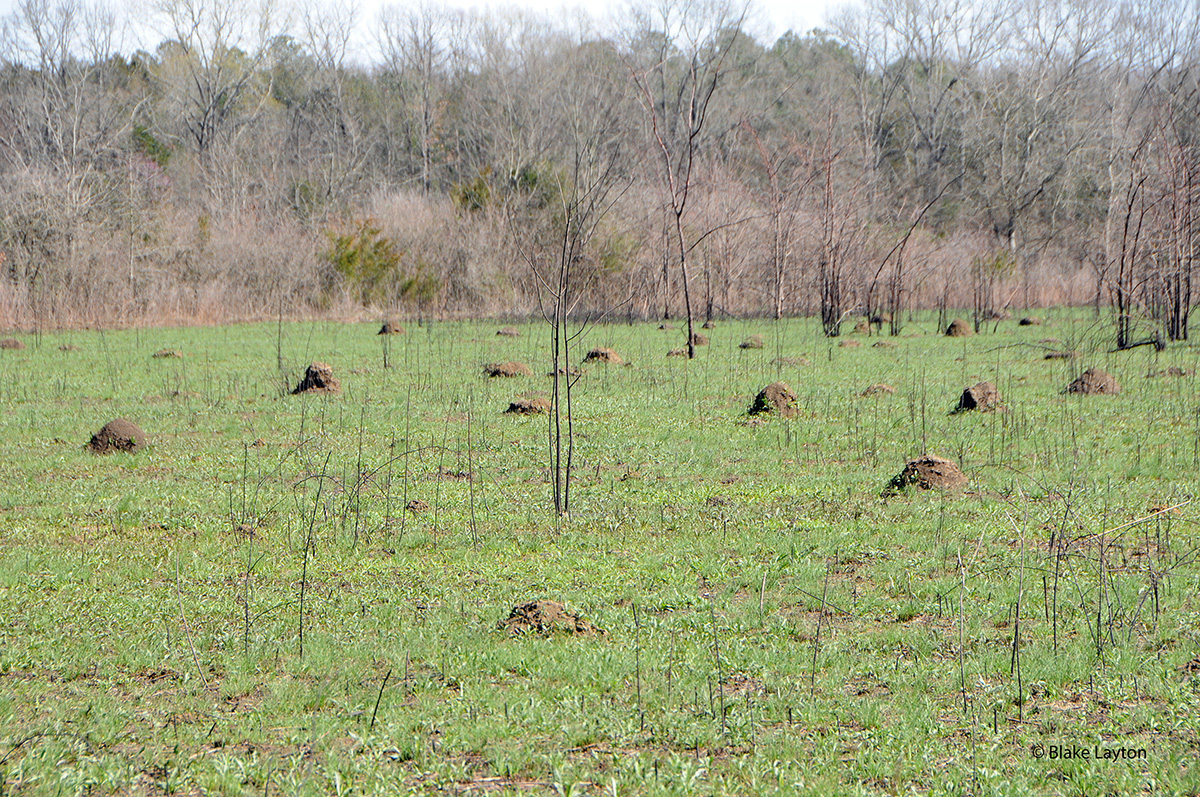So Many Fire Ant Mounds!, Vol. 9, No. 03
Related News
June 17, 2015
June 4, 2015
May 19, 2015

Order: Hymenoptera
Family: Formicidae
Fire ant mounds become much more obvious during late winter and early spring and this can give the impression that “fire ants are worse than usual this year.” In most cases the number of colonies per acre in a given area is probably about the same as it was the previous fall; it’s just that the mounds are easier to see. This is not only because the grass is shorter. During late winter and spring, fire ants intentionally build their mounds high above the soil line for two reasons. First, they want to avoid the waterlogged soil conditions that accompany heavy spring rainfall. Second, by building the mound up high they can take advantage of solar heating to warm the sides of the mounds, producing warmer conditions for rearing brood inside the mounds. They don’t want to keep the young ones down in the cold, wet basement!
During the summer months the opposite situation usually prevails. Fire ants prefer to nest below ground during hot dry periods to take advantage of the cool moist soil conditions. Mow the top off a fire ant mound in the summer and they probably won’t build it back right away. They don’t want to keep the young ones up in the hot dry attic! But even during the summer, mounds will pop up almost overnight following periods of heavy or prolonged rainfall as the ants are forced to flee underground flooding of brood-rearing galleries.
Control: The best way to avoid having large numbers of fire ant mounds in your yard in the spring is to apply a granular fire ant bait in the fall of the previous year. If you missed this opportunity, one of the best ways to deal with a heavy fire ant infestation is to “knock them out with a one-two punch.” First, apply a granular fire ant bait to the entire area by using a small hand-held seeder to broadcast the bait according to label directions (Amdro, Advion and Extinguish Plus are examples of such baits). Wait a few days to give the ants time to collect the bait; then spot treat all the mounds you can see with a dry powder mound treatment, such as Ortho Fire Ant Killer (acephate). Plan on making additional bait treatments in mid-summer and early fall, even if you don’t see any fire ant mounds in the yard, and keep spot treating any mounds that do appear. See Extension Publication 2429, Control Fire Ants in Your Yard for more information on fire ant biology and control.
Also see the MSU Extension Fire Ant Web Site for detailed information on fire ant biology and interesting fire ant facts, as well as information on controlling fire ants in special situations, such as pastures, orchards or vegetable gardens. This site also includes information on organic fire ant control and how to control and prevent indoor fire ant invasions.